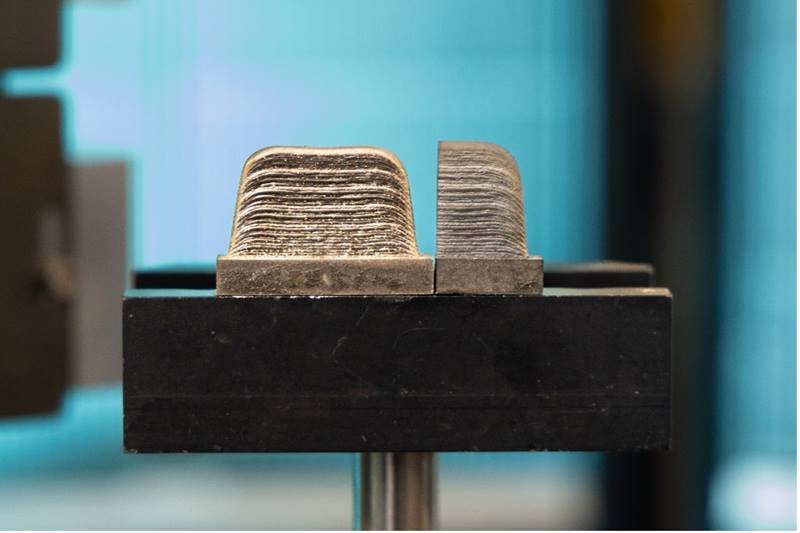The Science
Extreme applications like advanced gas turbines for generating electric power depend on equally advanced materials. In this work, researchers studied stress effects in novel “superalloys” made from two high-strength, high-heat resistant metals. The researchers created the alloys with 3D-printing, which uses a laser to fashion metal powder into desired shapes. Next, they used neutrons to measure the internal structure of the printed metals. The study found that heat treatments reduce stress created in the materials during manufacturing. The research also determined that stresses are more likely to be caused by certain manufacturing parameters than by the metal’s chemical composition.
The Impact
The researchers successfully used laser-based 3D-printing to make alloys from two different metals, Inconel 718 and René 41, without cracking. The neutron experiments helped to establish an improved process for accurately and efficiently evaluating the levels of stress created in the metals during the manufacturing process. The results will help lead to stronger, more advanced alloys with reduced manufacturing costs. These alloys are important for applications in extreme environments.
Summary
Additive manufacturing, or 3D-printing, is a new way of making metal parts and other types of materials by building them layer by layer. This research project, by researchers at General Electric, the Edison Welding Institute, and Oak Ridge National Laboratory (ORNL), printed an alloy composed of Inconel 718 and René 41 at two ends with a compositional graded region in the middle. The study evaluated the stress and composition variations of the alloy. To do so, the researchers conducted neutron experiments at the Spallation Neutron Source (SNS) and the High Flux Isotope Reactor (HFIR) at ORNL, both Department of Energy Office of Science user facilities. Neutrons are ideally suited to study internal stresses in materials because they can penetrate dense metals.
Using the VULCAN diffractometer at SNS and the MARS imaging instrument at HFIR, the researchers measured the distribution of residual lattice strains to see how the materials’ residual stresses and compositions changed during different processing phases. The neutron studies revealed that residual stresses occurred mostly as a result of the manufacturing process and can be mitigated by heat treatments. Stresses were found to be worse with longer laser dwell time or higher energy levels. The neutron studies also helped establish a more effective method for the companies to analyze the metals and improve their usefulness for making better parts at lower costs using additive manufacturing.
Funding
This work was supported by the Department of Energy (DOE) Office of Energy Efficiency and Renewable Energy, Advanced Manufacturing Office. A portion of this research used resources at the Spallation Neutron Source and High Flux Isotope Reactor, both DOE Office of Science user facilities operated by the Oak Ridge National Laboratory.
